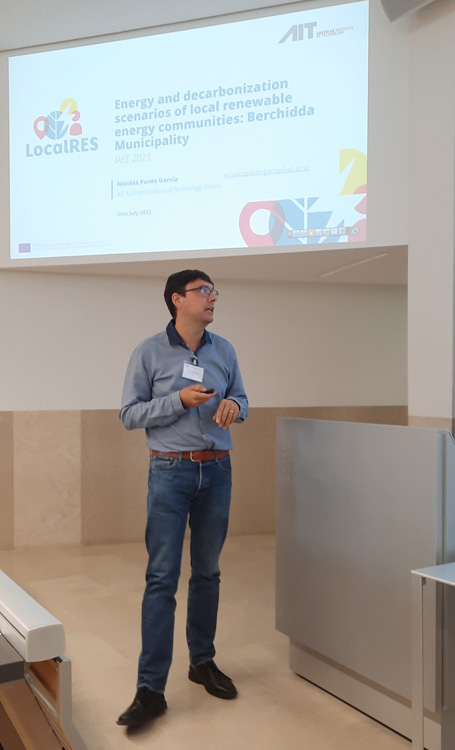

Energy and decarbonisation scenarios: Berchidda – LocalRES was at the AIEE 18th European conference!
On behalf of LocalRES, Luis Pardo Garcia from the Austrian Institute of Technology, gave a presentation on energy and decarbonisation scenarios of local renewable communities in the Berchidda municipality.
The presentation was given on the 24th of July during the 18th AIEE European Conference – the theme of this year being the global energy transition towards decarbonisation.
These are the main takeaways:
- Flexibility measures can support the electrification of the energy community and reduce the dependence on the national grid.
- Electrification of the heating and transport sector increases the need of PV as well as the use of batteries. There is a mismatch between local production and consumption at seasonal level that can produce curtailment in PV production during the summer periods.
- Black-out protection implies a high expansion of batteries covering partially electricity demand during the most critical blackout event. This electric battery capacity, together with other flexibility measures, could reduce the needed effective transmission capacity with the national grid.
- Full electrification will grow the seasonal mismatch in local renewable energy generation and consumption. Where a city might meet all it’s electricity needs in summer with solar and some wind it will struggle in winter as solar output is reduced and the electrification of heat increases electricity demand. There are two complementary solutions: increasing the transmission grid to improve access to wind power which peaks in winter, and using thermal heat as a battery to be charged when electricity is cheap and deployed when electricity is in greater demand and therefore more expensive.
- There is a clear reduction of overall CO2 emissions. However, while full electrification stops direct CO2 emissions, it raises indirect CO2 emissions due to higher electricity imports.
Discussion was centred around the imbalance between the local electricity demand and production and how the full electrification of renewable energy communities has collateral effects, such as the increase of the transmission line to cover the high levels of electrification. Usually, local renewable energy resources are not sufficient in this situation.

